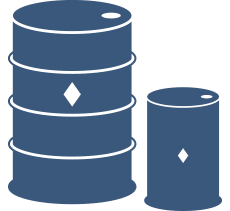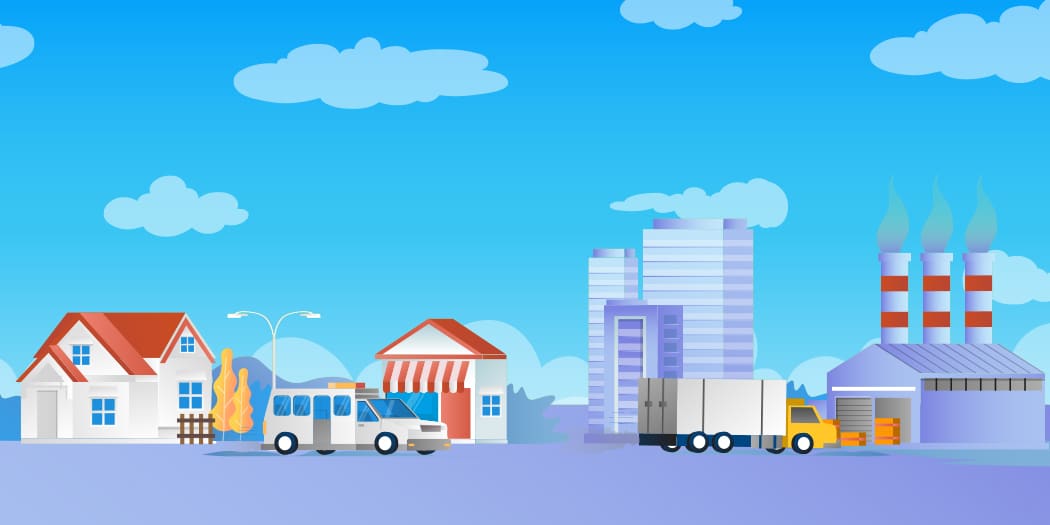Key Points
Listed Waste
Characteristic or Non-listed Waste
Mixed Waste
E-Waste
How to Properly Dispose of Hazardous Waste

Many people don't realize that there are in fact 4 types of hazardous waste. Hazardous waste refers to waste products that are potentially harmful to human life or the environment. They are typically chemical or electronic and come from several possible sources, from homes, commercial buildings, manufacturing plants, to laboratories. They can come in various states, including solids, liquids, and gasses. HAZMAT cleaners like Bio Recovery are trained to remediate them as well.
Property owners are responsible for properly disposing of any hazardous wastes legally. It’s not a job for “just anyone”, employees or technicians must be trained in proper OSHA hazardous waste management. A part of this process includes identifying the type of hazardous waste for efficient disposal.
The 4 Types of Hazardous Waste
While there are usually many hazards found at a site, the EPA has designed a system to classify the most common types for simple disposal. This is usually done so the disposal facility can efficiently and safely dispose of waste properly. The 4 types of hazardous waste categories the EPA classifies are as follows:
- Listed Waste
- Characteristic or Non-listed Waste
- Mixed Waste
- E-Waste
1. Listed Waste
The EPA classifies listed waste based on how it falls into four categories–or lists (F-List, K-List, U-List, and P List), as per title 40 of the Code of Federal Regulations (CFR) Part 261.
The F-List
The F-list identifies hazardous waste from various industrial and manufacturing processes, though they can include non-specific sources with how many different sources there are in the manufacturing industries. F-list waste is further broken down into several more groups:
- Spent solvent wastes
- Dioxin-bearing wastes
- Metal finishing and electroplating waste
- Wood preserving waste
- Chlorinated aliphatic hydrocarbon production waste
- Petroleum refinery wastewater and sludge treatment
- Multisource leachate
The K-List
This list identifies wastes from specific industrial sectors, also known as source-specific wastes. The EPA classifies K-list wastes into 13 categories by matching each waste to the appropriate K-list waste description. The industries that typically dispose of K-List waste include:
- Pesticides manufacturing
- Organic chemical manufacturing
- Inorganic pigment manufacturing
- Explosives manufacturing
- Ink formulation, among others.
P and U Lists
The P and U lists identify hazardous wastes from disposed of commercial chemical products. To meet the criteria for P or U listed hazardous waste:
- It must contain one of the chemicals listed on the P or U list.
- The chemical must be unused, and
- The chemical must be a commercial chemical product.
2. Characteristic Waste or Non-listed Waste
The EPA classifies hazardous wastes when specific characteristics pose a sufficient threat to warrant regulation. There are four hazardous waste characteristics: ignitability, corrosivity, reactivity, and toxicity.
Ignitability
Wastes in this category include liquids with lower than 60 degrees flash points, non-liquids that ignite in special conditions, ignitable gasses, and oxidizers.
Corrosivity
These include aqueous wastes with a pH of 2 or less, those with a pH of 12.5 or above, and liquids that can corrode metal.
Reactivity
Wastes classified as hazardous due to reactivity characteristics are highly reactive, unstable in normal conditions, give off toxic gasses, and explode when heated.
Toxicity
These are wastes that release dangerous toxins when ingested or absorbed. Such toxins can also leach into groundwater.
3. Mixed Waste
These are wastes that release dangerous toxins when ingested or absorbed. Such toxins can also leach into groundwater.
4. E-Waste
E-waste or electronic waste refers to decommissioned electronic parts and products. E-waste can come from our homes or workplace and includes items like computers, televisions, monitors, audio equipment, batteries, telephones, and copying machines.
How to Properly Dispose of Hazardous Waste
Property owners must have a licensed biohazard removal company like Bio Recovery dispose of waste that is either considered biological or hazardous. You can’t just throw biohazards or hazards in the garbage and call it a day. A professional needs to be able to identify the type of waste to classify it, transport it, and dispose of it.
While a technician should be equipped and have the correct biohazard container will effectively quarantine the waste, it’s very important that the technician wears the appropriate PPE to limit any further exposure. A professional will be familiar with the proper way to store such waste and transport it to the disposal site. A certified biohazard disposal facility will properly store, decontaminate, and make a decision on what to do with it.
Call the Professionals
There’s no reason you shouldn’t have a licensed professional take care of the situation. Companies like Bio Recovery are licensed, bonded, and insured. They are OSHA, EPA, and DOT compliant to handle, transport, and dispose of these types of situations, many which are covered by insurance. Contact us today for professional hazmat and biohazard cleanup services.
Share this Post
